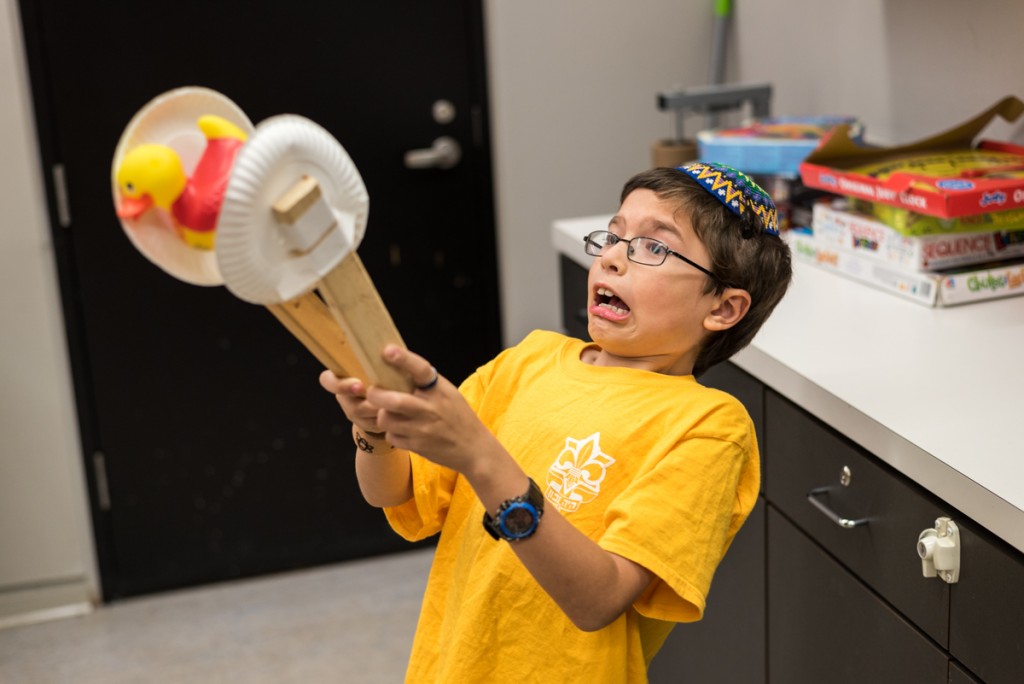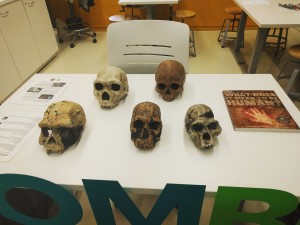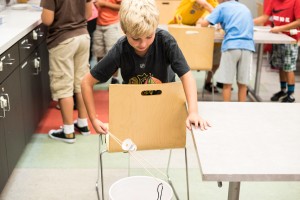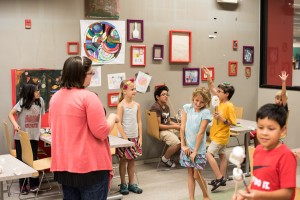Our library recently hosted the traveling exhibit Exploring Human Origins, which came to Skokie from the Smithsonian Institution through an ALA grant. In addition to the exhibit itself, we hosted a number of programs for all ages to engage in the topic of humans and evolution. Our cornerstone youth event, for kids in third through fifth grade, focused on exploring tools and the brain. Here’s what we did.
To kick things off, we started with a conversation about human brains and our ancestors’ brains over time. The Exploring Human Origins exhibit came with replicas of skulls from the human family tree, so kids were able to observe those models and make some inferences. We talked about the average size of humans’ brains and how brains develop. From there, we talked about skills that our evolved brains allow us to learn and perform.
Once we’d naturally landed on the topic of creating and using tools, we deterred a bit from talking about humans to talk about other animals that have been observed to use tools: namely chimpanzees (with discussion of Jane Goodall’s research) and dolphins (with reference to The Dolphins of Shark Bay). We talked about what sets humans’ use of tools apart–that we’re able to build and manipulate complex tools. Our advanced tools–from scissors to appliances to all our technologies–are a big leap from using sticks or sponges to help get at food.
After this introductory discussion, which took about 15 minutes of our 60-minute program, we introduced the challenge of the day: to use an assortment of random objects to create tools to complete specific tasks.

As part of the Exploring Human Origins theme, kids in grades 3-5 experimented with tool making during Be The Scientist: Tools and the Brain.
Our random objects for building:
- Dowels
- Wood scraps
- Popsicle sticks
- String
- Straws
- Paper plates
- Paper
- Card stock
- Tape
- (basically any random craft supplies you may have)
Our challenges:
- One of your livestock has fallen in a hole! (In our case, a rubber duck in a 6-gallon drum.) Construct a tool to get the livestock out.
- Construct a tool to get water out of a deep hole. (Again, a 6-gallon drum, this time with a few inches water in it.)
Kids were given the option of working alone, in pairs, or in teams to construct their tools, and they were encouraged to test out some models over the course of 30-40 minutes before we gathered to watch final trials of the tools. One group in particular got really into trying different techniques for their tools–including thinking about what they’d learned about simple machines to create a pulley system.
The range of tools created was fascinating, from the incredibly simple to the complex. As each child or group tested their tool in front of the group, kids started talking about what types of tweaks they might make to improve functionality and success at completing the challenges. A sign of a great, thought-provoking program: many kids asked to take their creations home to keep improving and/or share with their family members. Pride in our creations: another feature that makes us human.







That sounds like a whole lot of fun, Amy! I may steal your activity for one of my Crafternoon programs!
Was there a particular thing inside the bucket they were trying to pick up with their tools?
Never mind I see you used a rubber duck.